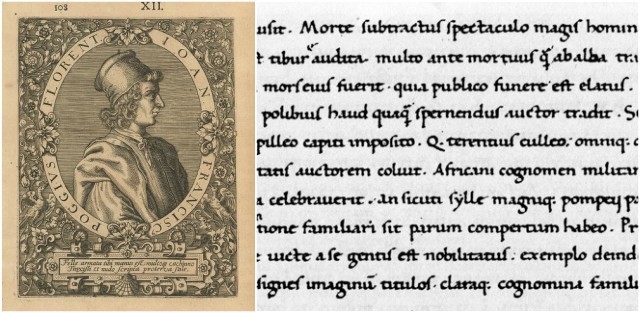The term Renaissance means “rebirth, ” and it refers to a period in European history approximately between 1400 and 1600. It began in Florence, Italy, through the recovery by Italian scholars of Greek and Roman classical literature. The Renaissance was also a time of new discoveries in the fields of philosophy, science, architecture, religion and fine arts.
The writing was an additional area of rediscovery, and many literary agents copied a great number of ancient manuscripts. Among them, was the Italian scholar and early humanist, Poggio Bracciolini.
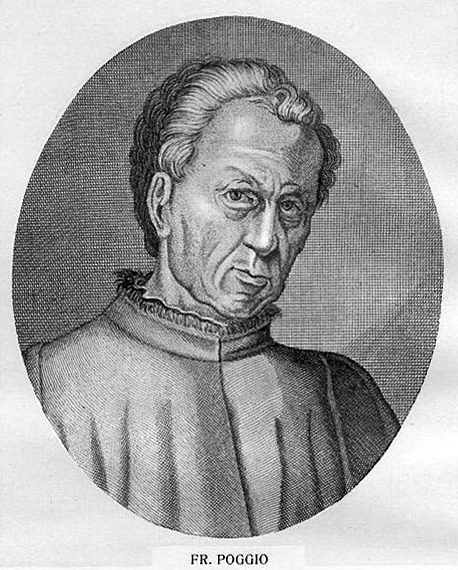
Born in 1380 at Terranova, near Arezzo in Tuscany, Bracciolini studied Latin under Petrarch’s friend John of Ravena and Greek under Manuel Chrysoloras. His talents were soon recognized by the foremost scholars of Florence. Therefore, Bracciolini was able to start his successful career as a copyist of manuscripts. It is said that Poggio championed a new semi-gothic script which later evolved into the humanist book-hand.
When Bracciolini was 23-years-old, he moved to Rome and accepted the invitation to join the Chancery of Apostolic Briefs in the Roman Curia of Pope Boniface IX. Working for the Pope meant that Poggio could travel through various European capitals and visit some of the most important libraries at the time. This gave him the opportunity to study both the majuscules and the minuscule which formed the Humanistic script.
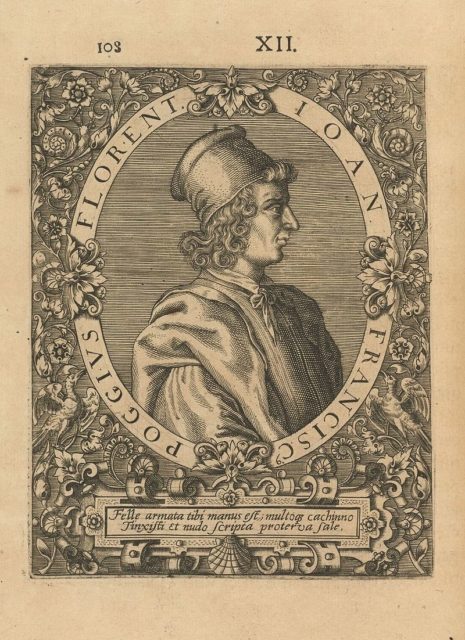
In a short period of 2 years, Poggio brought to light ten orations of Cicero including Pro Caecina. He also found the first complete text of Quintilian’s Institutio oratoria, three books of Valerius Flaccus’s Argonautica, and the commentaries on Cicero’s orations byAsconius Pedianus
He set out on several expeditions throughout monasteries in Europe and restored many lost masterpieces of Latin literature. His expeditions produced P. Festus’s De significatu verborum; Lucretius’s only surviving work De rerum natura; Manilius’s Astronomica; Silius Italicus’s Punica; Ammianus Marcellinus’s Res gestae; and other works. He made many copies of the lost masterpieces and several of them have survived.
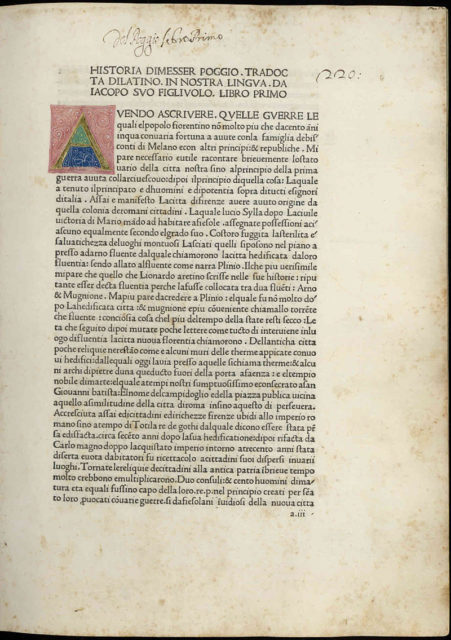
Poggio was prepared to do anything just to obtain more of the lost masterpieces. Reportedly he once bribed a monk to abstract a Livy and an Ammianus from the convent library of Hersfeld.
He spent four years in England at the invitation of Henry, Cardinal Beaufort, Bishop of Winchester, but this period of his life is considered to be the least productive. When he returned to Rome, he was reappointed curial secretary of Rome and made significant discoveries, including Firmicus Maternus’s Matheseos Libri.
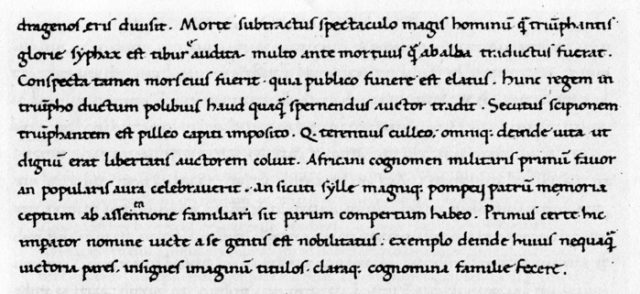
Famous for his beautiful and legible book hand, Poggio copied many manuscripts, invented the humanist script and contributed to the Humanistic script in Italy and Europe.
The French printer, Nicolas Jenson was the first to use Poggio’s style in 1470. However, he was not the last one, so Poggio’s round, formal writing later served the new art of printing, as the prototype of “Roman” fonts.
